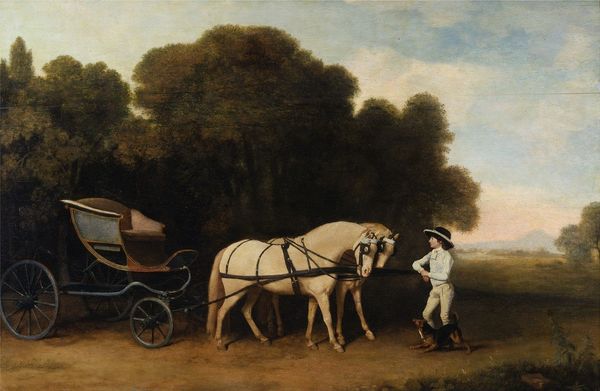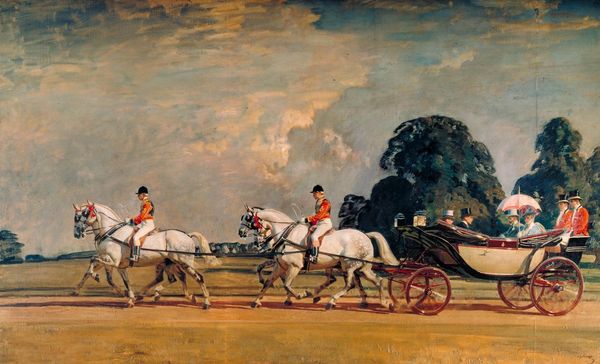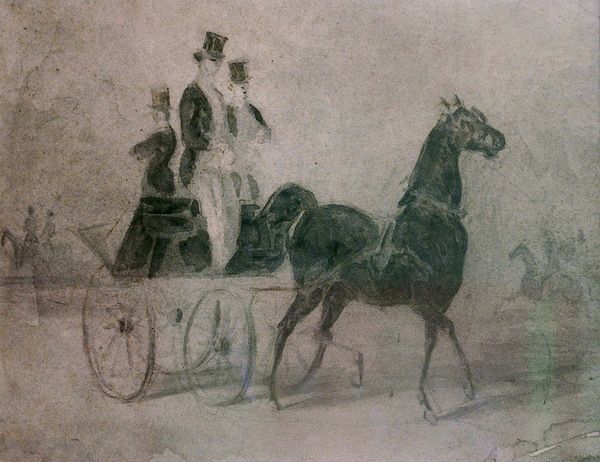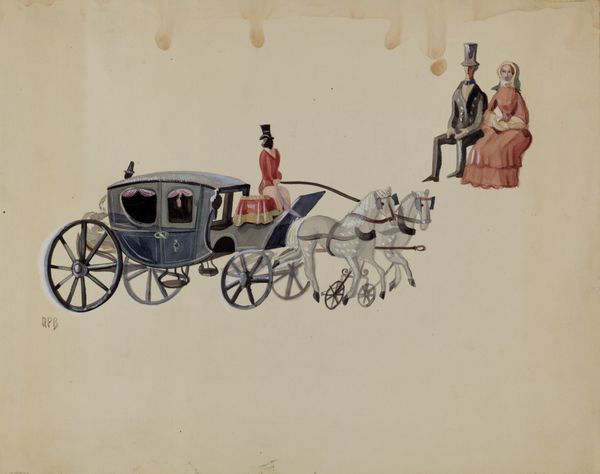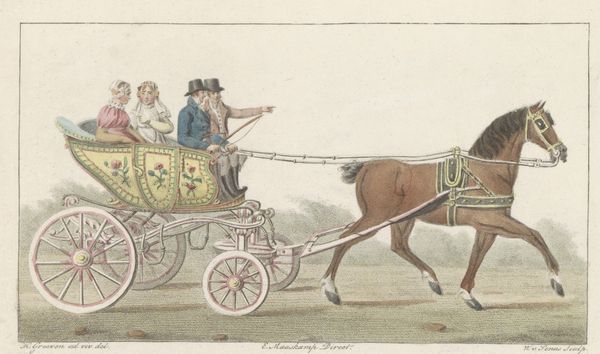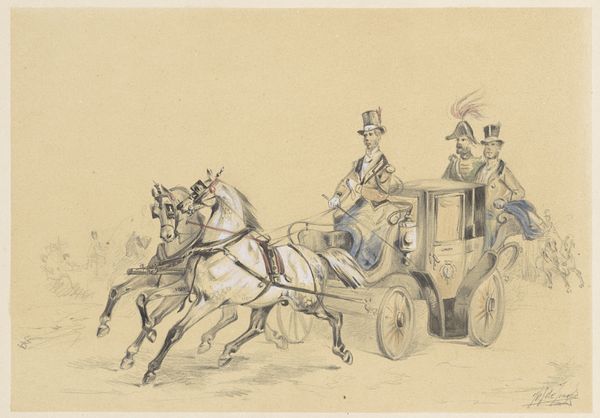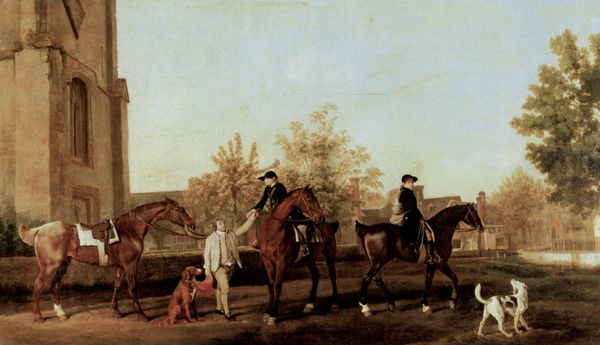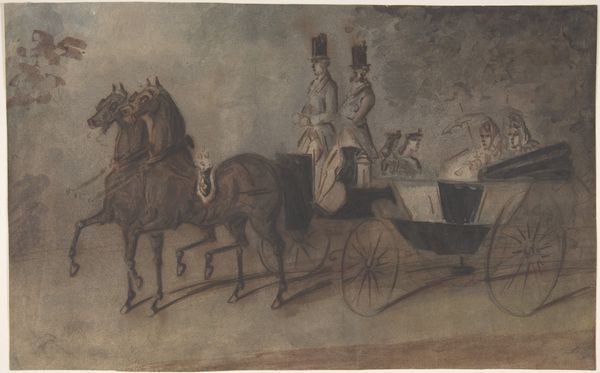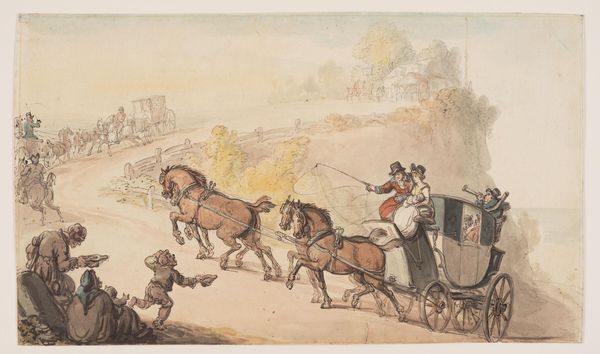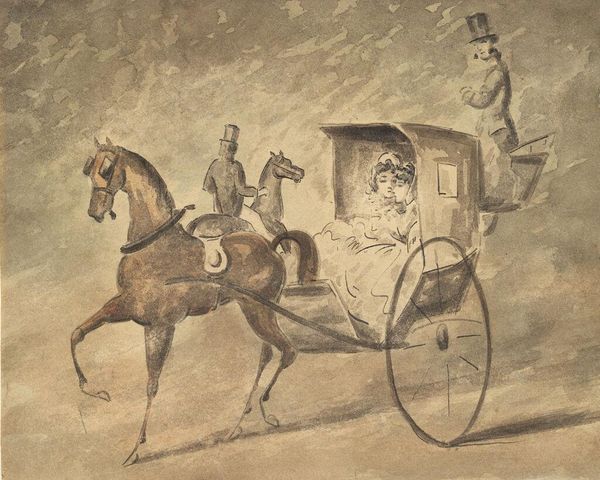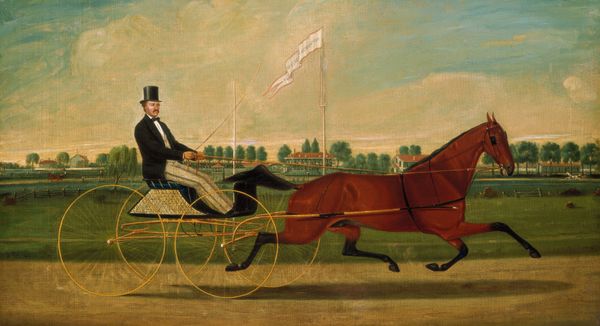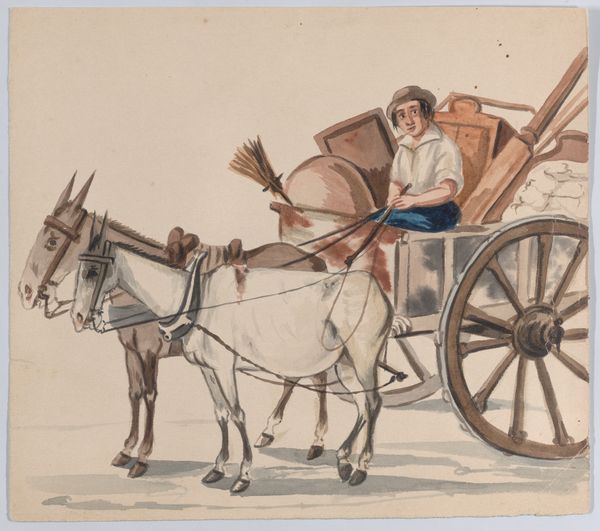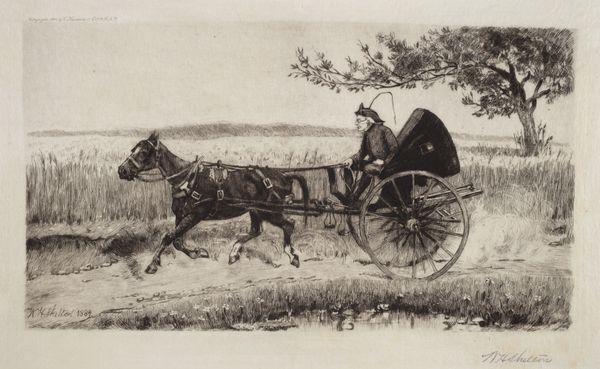
Dimensions: 82.5 x 101.6 cm
Copyright: Public domain
Curator: Here we have George Stubbs’ "Lord and Lady in a Phaeton," painted in 1787. The work, rendered in oil on canvas, currently resides at the National Gallery, London. Editor: It feels very composed and serene, almost theatrical. The carriage is stage-center, while the muted palette evokes a palpable sense of aristocratic calm, a pastoral elegance. Curator: Indeed, Stubbs, famed for his anatomical precision in equine paintings, here depicts more than just horses; he’s presenting a social portrait. Consider the Phaeton itself. It symbolizes wealth and status. The figures, positioned within it, are deliberately framed against the landscape. How do you interpret their positioning? Editor: They seem slightly detached, even from each other. He’s driving, active; she's beside him, a decorative accessory almost merging with the carriage’s colour palette. The symbols feel very pronounced – her ornamental hat especially reads to me as a signifier of wealth. It reminds me how portraits were about power as much as likeness. Curator: Precisely. Stubbs was certainly a chronicler of his time. The burgeoning wealth of the landed gentry, their relationship to the landscape, and their careful presentation of themselves all coalesce here. Observe the landscape. It's idealized, controlled. Editor: It brings to mind the Enclosure Acts and the reorganization of land. Everything is curated. Curator: Absolutely. And how the paired horses act as a symbol of power under control. There is a clear statement about humanity’s dominance over nature, and this aristocratic couple, dominating the pulling horses. This resonates within the broader political narratives of the era. Editor: A polished mirror reflecting the ambitions and anxieties of a specific social strata at a pivotal moment. Curator: I agree. It’s an intricate tapestry woven from social ambition, status, and the subtle power dynamics of the time. Editor: It seems that every aspect of this composition underscores how closely intertwined class and visibility were, which continue to be relevant cultural through-lines.
Comments
No comments
Be the first to comment and join the conversation on the ultimate creative platform.
